Cordyline Can Be Injured By Frost, Damp Or Wet: Revive Yours With These Tips
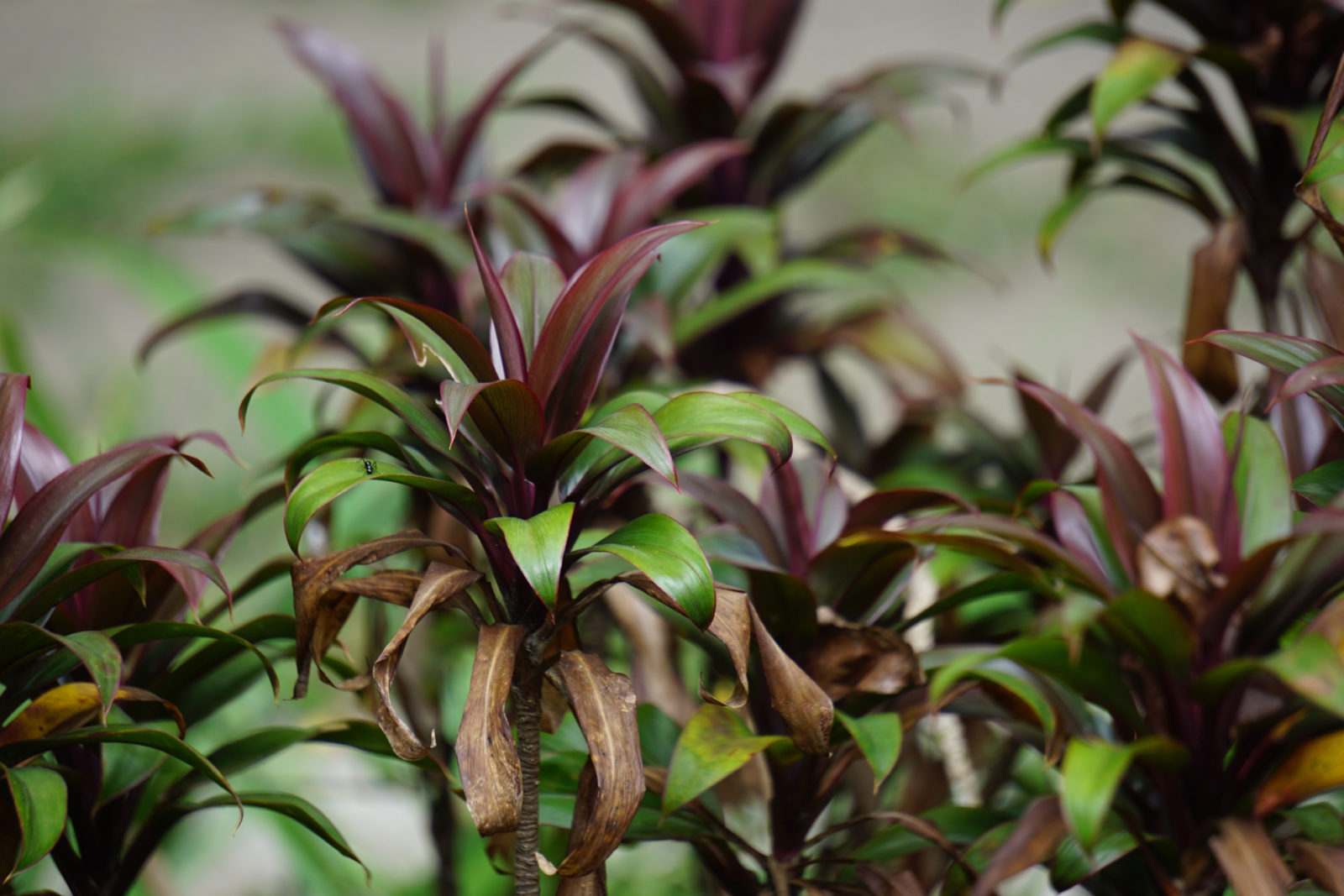
Reviewed By PETER LICKORISH

Peter is a Horticulture Lecturer and self-employed Horticulturist, with a passion for diverse areas of the industry - from garden design to the science behind plant growth and propagation. He has completed the Royal Horticultural Society’s Master of Horticulture (MHort) Award and lectures on RHS courses at Bedford College.
IN THIS GUIDE
CORDYLINE GUIDES
Container Growing
Leaves Changing Colour
Overwintering
Propagation
Pruning
Revival
Varieties
Cordylines, in their native sub-tropical to temperate habitats, are long-lived trees.
However, in the UK, they can be damaged by draughts, dampness and winter cold or wet, regardless of whether they are grown inside or outside.
Underneath we explain how you can revive a fully-fledged outdoor cordyline or a small potted plant that you are at risk of losing.
Immediate Action For Reviving Outdoor Varieties
Outdoor cordyline trees in the UK are more often injured by frost, damp and wet in the winter than by other problems.
The first sign is dead and dying foliage.
While this can sometimes be down to other causes, if the upper part of the main stem or trunk is not hard and stiff but feels unpleasantly soft, it is usually because the cold or wet has caused the plant to rot.
The first step is to remove the dead or dying foliage by either pulling or cutting it off.

You will also need to shepherd the injured tree through the cold season by protecting the crown as well as the roots from winter wet.
You can do so by tying together any remaining leaves and covering the crown and main stem with a waterproof horticultural fleece or plastic sheeting.
Do so only during cold and wet periods and not when the days are dry and sunny.
Also, protect the roots by putting down a layer of organic mulch around 10cm thick, leaving 2-3 centimetres around the main stem.
During periods of inclement weather, lay plastic sheeting around the main stem.
Follow-Up Care For Outdoor Varieties
The next step is a cutback or severe prune when spring arrives.
Feel your way down the trunk or main stem to the point at which it is not soft but feels healthy, firm and hard.
At least several centimetres below this point cut off the trunk or main stem.
“Make your cut using a sharp pair of loppers or a pruning saw, at a slight angle, to let water drain,” adds Peter Lickorish, a Master Horticulturist.
After angling and smoothing out the trunk or main stem, give the plant a fair amount of water, especially if the soil is dry.
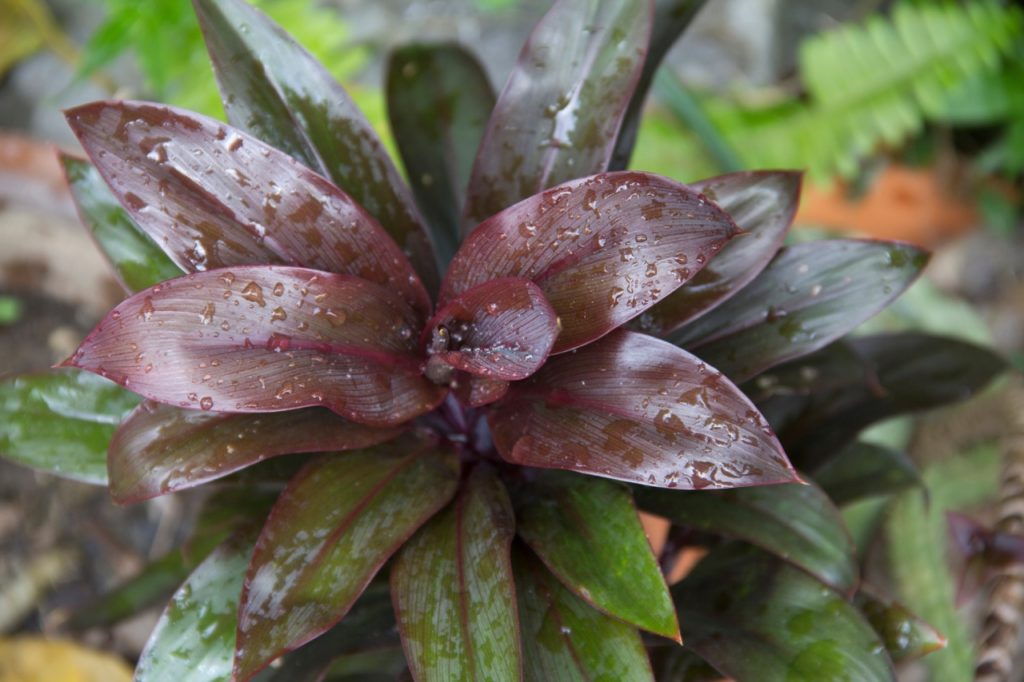
Water regularly so that the soil becomes moist all through but does not get soaked and allow it to dry out between watering.
During this recovery period, I would recommend that you water the plant with filtered water that is at room temperature so you don’t cause any further damage.
Feed the tree a very moderate helping of organic fertiliser every 3 weeks, making sure to stay away from the roots when working the granules into the soil with a hand fork.
“In time, bare stems should soon produce horn-like re-growths, which develop into leaves,” adds Peter.
Reviving Indoor Varieties
If your potted Cordyline fruticosa variety is ailing, its foliage will provide a very good clue if either underwatering or overwatering is to blame.
If the leaves have brown tips and edges, the cause is likely underwatering.
If the leaves through most of their surfaces are turning a sickly shade of yellow or another pale colour, the cause is likely overwatering.
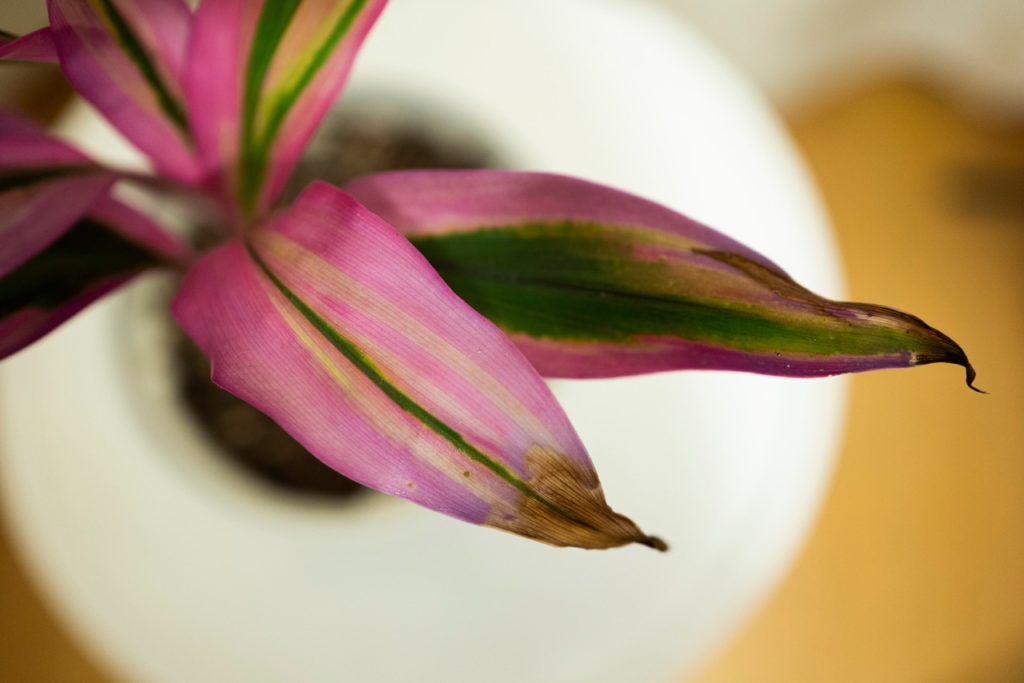
Now that you have these clues, you should be able to determine the cause for sure.
Had you jetted off for a holiday and forgotten to make watering arrangements for your little cordyline, or are you a first-time cordyline owner who has been watering your plant very religiously?
No matter the cause of your plant’s health woes, the container should be kept in a suitable spot, be it outdoors during the summer or indoors all year round.
Fixing Underwatering
If the cause of a plant’s health struggles is underwatering, the solution is always easier and the recovery is almost always surer than if the cause is overwatering.
First, give the plant a good watering, but be sure the soil drains very well and the pot has drainage holes.
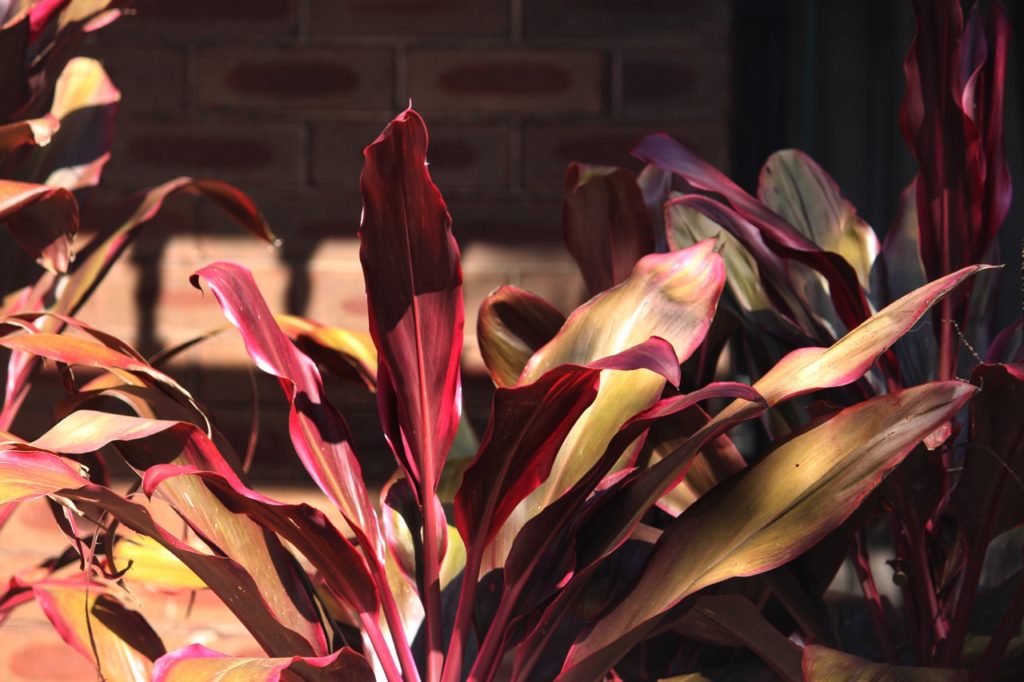
To improve the chances of recovery, water with bottled or filtered water at room temperature.
Afterwards, do not water daily but water it regularly and moderately so that the soil is made damp all through but is not soaked.
Allow the soil to dry out between waterings.
Fixing Overwatering
If you have determined that the cause of your troubles is overwatering, you may have a trickier task on your hands.
If you conclude that the overwatering has been extensive then you will need to repot your cordyline into a fresh, drier medium.
However, if you have caught the problem in good time, the solution is simply to stop watering and allow the soil to dry out.
I find that tilling, raking and turning over wet, compacted soil with a gardening fork or a hand rake is immensely helpful in aerating, loosening and drying out damp or wet soil.
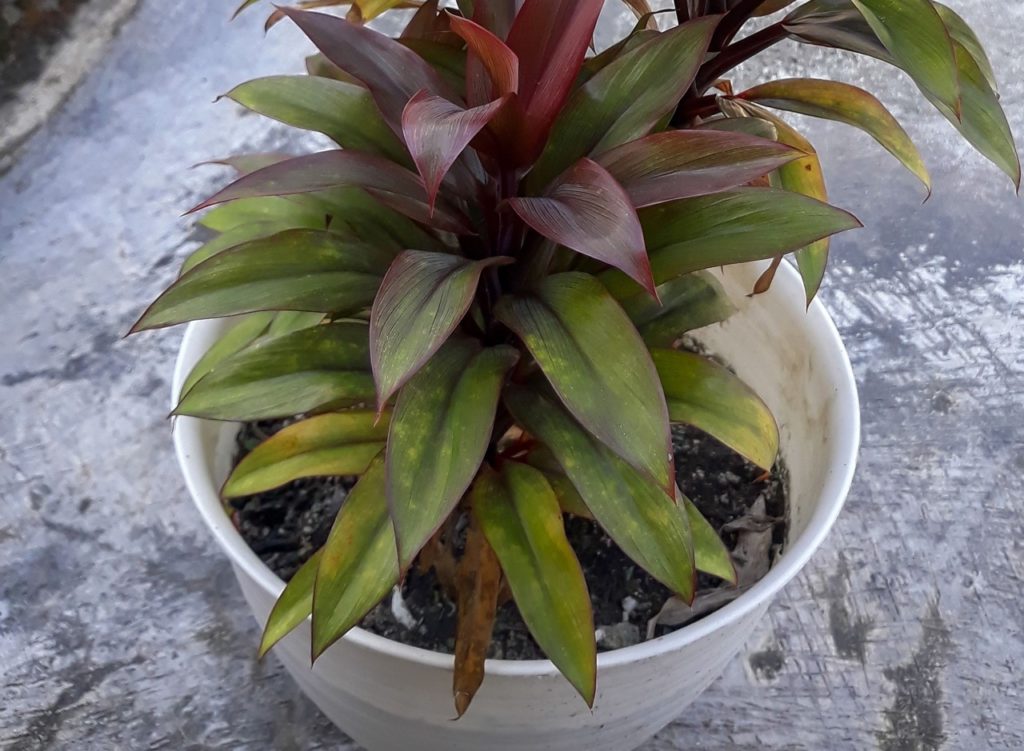
Try to do so as deeply as possible without touching the roots.
When you recommence watering after the soil has totally dried out, use bottled water at room temperature.
You will notice that the leaves gradually regain their natural hues and become healthy and turgid.
If they begin to appear limp once again or develop brown tips or edges, you are ready to resume normal watering.
Repotting Damaged Houseplants
If the plant is badly affected by overwatering, you will need to prepare a new container with moderately fertile loam-based soil that is free-draining in which to repot the plant.
Not only will the injured plant benefit from soil that is suitable and fresh, but you will also get a chance to inspect the roots.
If all the roots are white or light-coloured and not limp or squishy, your plant is all set for repotting.
However, if any of the roots are brown and have a limp or squishy feel about them, root rot has set in and you’ll need to find out how much of the root system is damaged.
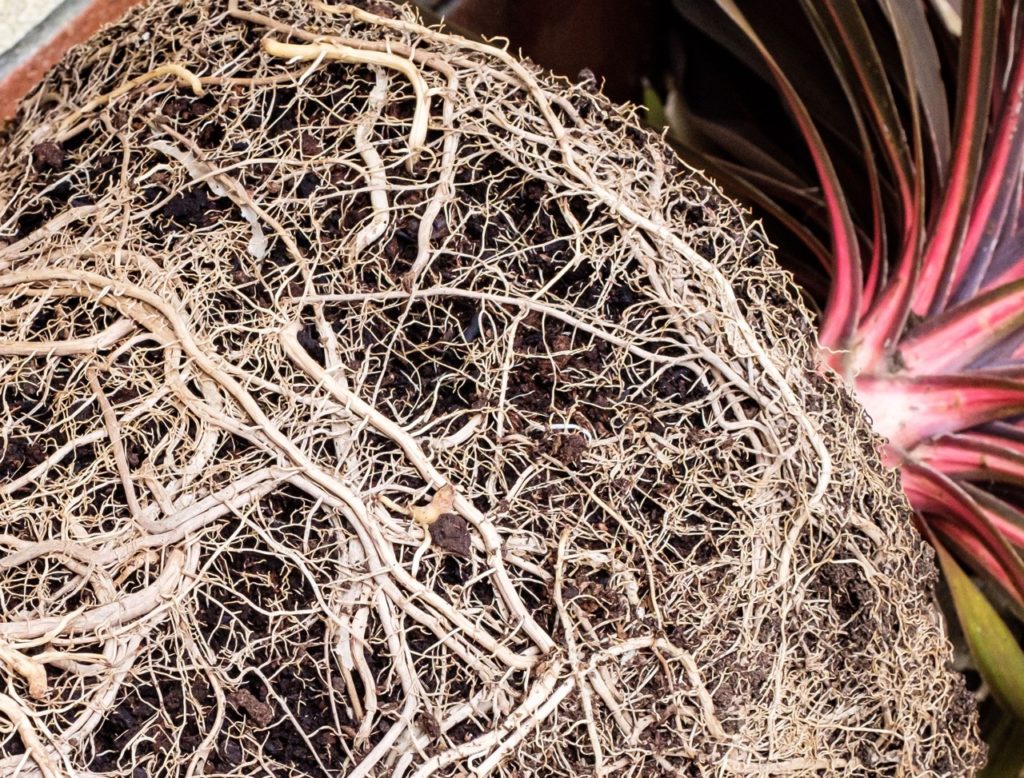
Very gently remove the soil from the root ball so as to inspect the root system.
It is best to do so using your fingers.
If considerably over half of the root system has rotted, the chances of recovery are slim, but otherwise, your plant should still be able to recover.
If your decision is to try to save the plant, use sterilised mini secateurs to cut away those parts of the roots that have rotted.
Once the job is complete, repot the plant and follow the watering guidelines above to revive it.

